Year 1
The English curriculum is built around the three interrelated strands of language, literature and literacy. Teaching and learning programs should balance and integrate all three strands. Together, the strands focus on developing students' knowledge, understanding and skills in listening, reading, viewing, speaking, writing and creating. Learning in English builds on concepts, skills and processes developed in earlier years, and teachers will revisit and strengthen these as needed.
In Year 1, students communicate with peers, teachers, known adults and students from other classes.
Students engage with a variety of texts for enjoyment. They listen to, read, view and interpret spoken, written and multimodal texts designed to entertain and inform. These encompass traditional oral texts including Aboriginal stories, picture books, various types of stories, rhyming verse, poetry, non-fiction, film, dramatic performances and texts used by students as models for constructing their own texts.
The range of literary texts for Foundation to Year 10 comprises Australian literature, including the oral narrative traditions of Aboriginal and Torres Strait Islander Peoples, as well as the contemporary literature of these two cultural groups, and classic and contemporary world literature, including texts from and about Asia. Literary texts that support and extend Year 1 students as independent readers involve straightforward sequences of events and everyday happenings with recognisably realistic or imaginary characters. Informative texts present a small amount of new content about familiar topics of interest and topics being studied in other areas of the curriculum. These include decodable and predictable texts which present a small range of language features, including simple and compound sentences, some unfamiliar vocabulary, a small number of high-frequency words and words that need to be decoded phonically, as well as illustrations and diagrams that support the printed text.
Students create a variety of imaginative, informative and persuasive texts including recounts, procedures, performances, literary retellings and poetry.
(source: www.australiancurriculum.edu.au)
Achievement Standard
Receptive modes (listening, reading and viewing)
By the end of Year 1, students understand the different purposes of texts. They make connections to personal experience when explaining characters and main events in short texts. They identify that texts serve different purposes and that this affects how they are organised. They describe characters, settings and events in different types of literature.
Students read aloud, with developing fluency. They read short texts with some unfamiliar vocabulary, simple and compound sentences and supportive images. When reading, they use knowledge of the relationship between sounds and letters, high-frequency words, sentence boundary punctuation and directionality to make meaning. They recall key ideas and recognise literal and implied meaning in texts. They listen to others when taking part in conversations, using appropriate language features and interaction skills.
Productive modes (speaking, writing and creating)
Students understand how characters in texts are developed and give reasons for personal preferences. They create texts that show understanding of the connection between writing, speech and images.
They create short texts for a small range of purposes. They interact in pair, group and class discussions, taking turns when responding. They make short presentations on familiar topics. When writing, students provide details about ideas or events, and details about the participants in those events. They accurately spell high-frequency words and words with regular spelling patterns. They use capital letters and full stops and form all upper- and lower-case letters correctly.
(source: www.australiancurriculum.edu.au)
- Plus Plan

Which Phoneme Is Missing? Interactive Activity
Create word chains using CVC words with this engaging drag-and-drop phonics activity.
- Plus Plan
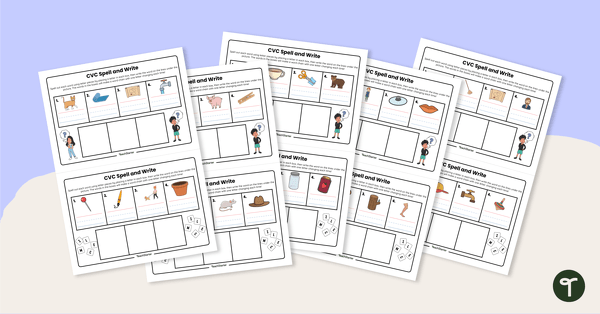
CVC Spell and Write Task Cards
Practise spelling CVC words and manipulating their phonemes to create word chains with this set of hands-on work mats.
- Plus Plan
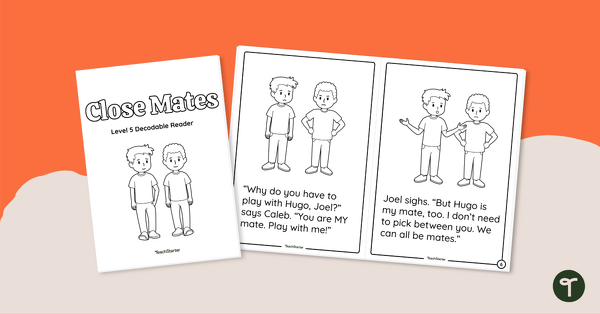
Close Mates - Decodable Reader (Level 5)
Develop confident, successful readers with this phonics-based, printable decodable book.
- Plus Plan
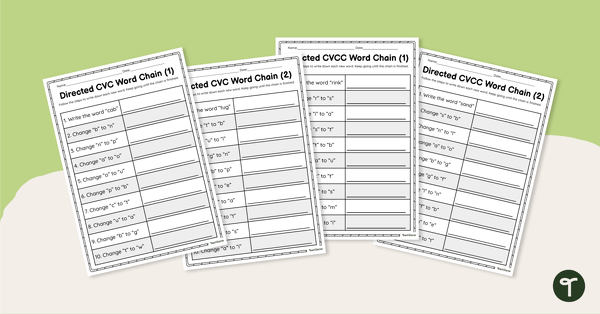
Directed Word Chains - Worksheets
Manipulate the individual phonemes in words to create new ones with this set of four word chain worksheets.
- Plus Plan
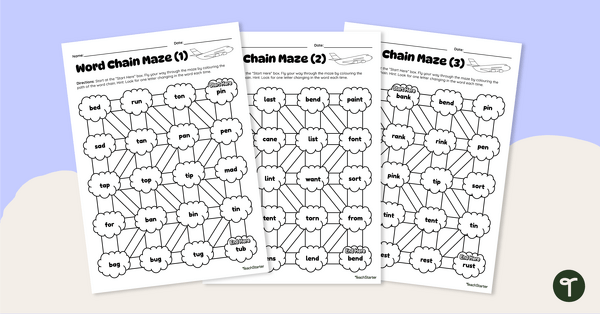
Word Chain Mazes - Worksheets
Colour a path through the maze by identifying the changing phoneme to create a continuous word chain.
- Plus Plan
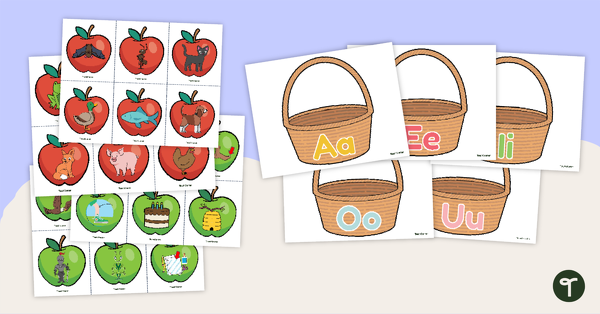
Vowel Sorting Activity - Short and Long Vowels
Supplement your phonics lessons with an apple-themed vowel sound sorting activity.
- Plus Plan
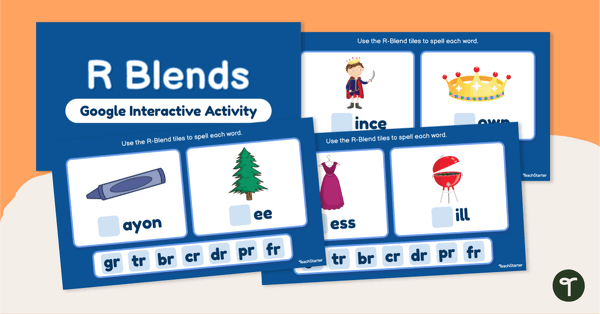
Initial R-Blends - Interactive Activity
Become familiar with words that begin with an r-blend using this interactive digital resource.
- Plus Plan
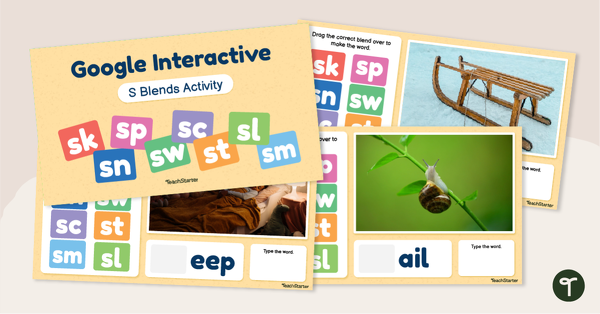
Initial S-Blends - Interactive Activity
Become familiar with words that begin with an s-blend using this interactive digital resource.
- Plus Plan
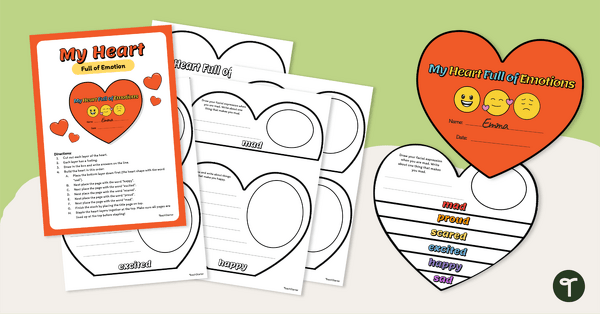
My Heart Full of Emotions Activity
Promote mindfulness and self reflection by writing out descriptions of different emotions.
- Plus Plan
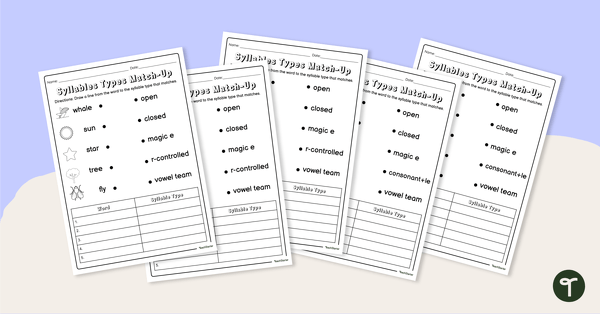
Syllable Types Match-Up Worksheets
Identify and match words to the correct syllable types with this set of five worksheets.
- Plus Plan
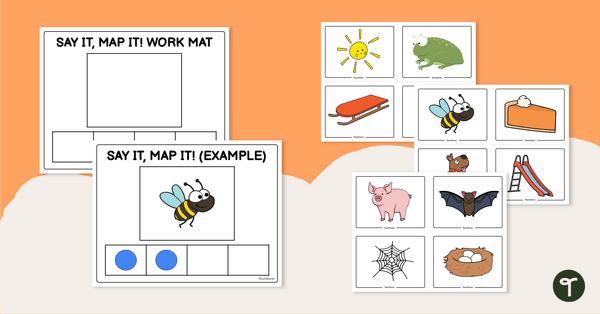
Phoneme Segmentation Work Mats - Count It!
Develop phonemic awareness using hands-on manipulatives with this counting phonemes work mat and accompanying picture cards.
- Plus Plan
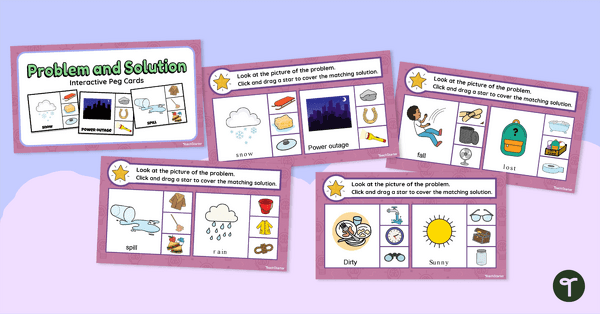
Problem and Solution Interactive Peg Cards
Practise identifying problems and solutions with an interactive peg card activity.
- Plus Plan
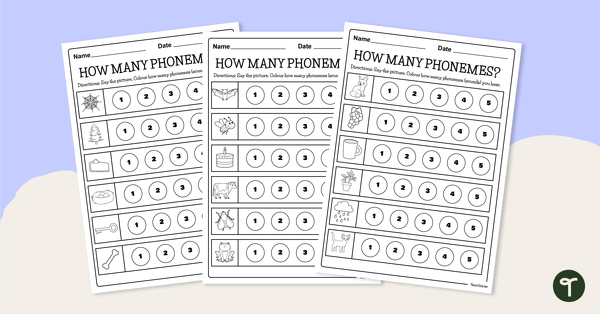
How Many Phonemes? Worksheets
Practise counting the number of phonemes in common words with the set of five phonics worksheets.
- Plus Plan
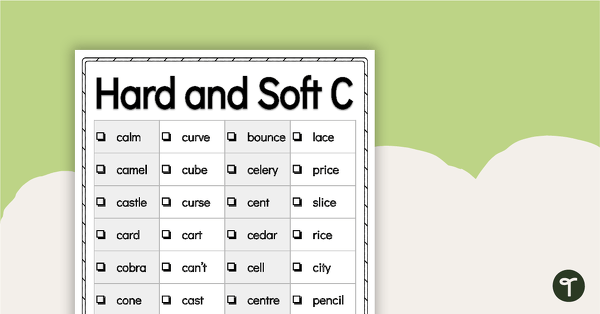
Word Study List - Hard and Soft C
Introduce and explore words containing the hard and soft c with this extensive list of words.
- Plus Plan
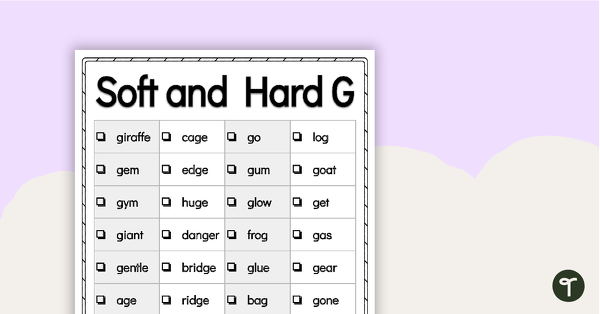
Word Study List - Hard and Soft G
Introduce and explore words containing the hard and soft g with this extensive list of words.
- Plus Plan
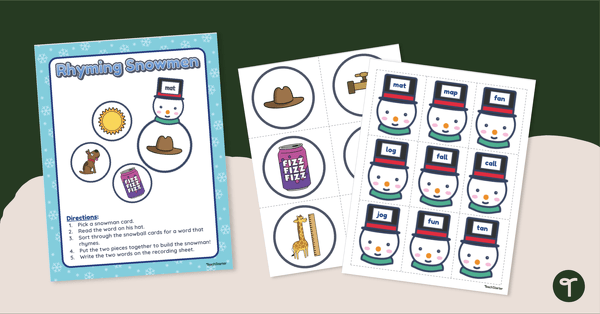
Rhyming Snowmen - Match-Up Activity
Bring a bit of snow into the classroom with a winter-themed rhyming word game for early years students.
- Plus Plan
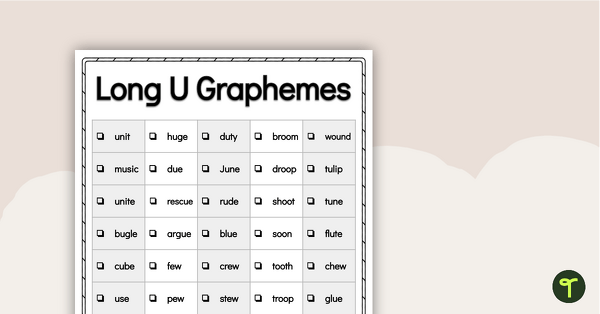
Word Study List - Long U Graphemes
Introduce and explore words containing graphemes that make the ‘long u’ sound with this extensive list of words.
- Plus Plan
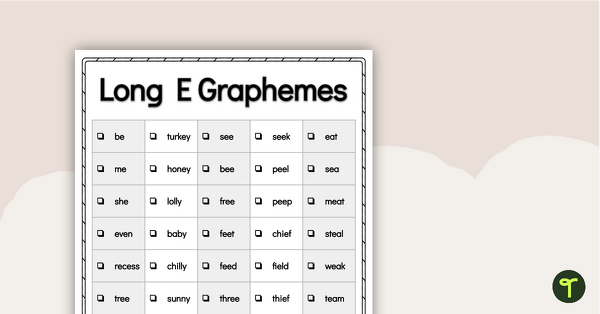
Word Study List - Long E Graphemes
Introduce and explore words containing graphemes that make the ‘long e’ sound with this extensive list of words.
- Plus Plan
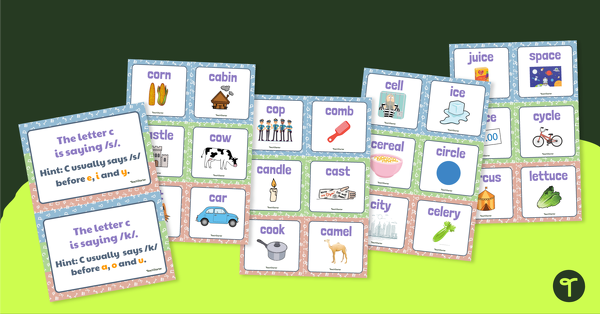
Which Sound? Sorting Activity - The Letter C
Practise identifying the different sounds made by the letter C with this hands-on sorting activity.
- Plus Plan
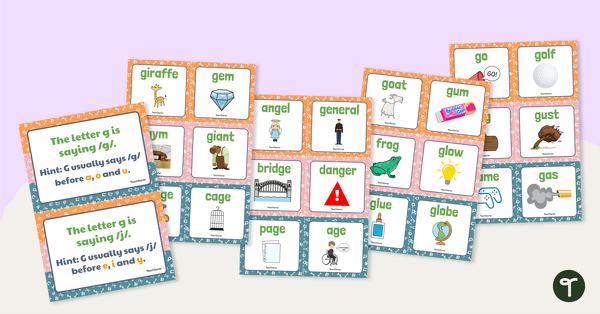
Which Sound? Sorting Activity - The Letter G
Practise identifying the different sounds made by the letter G with this hands-on sorting activity.
- Plus Plan
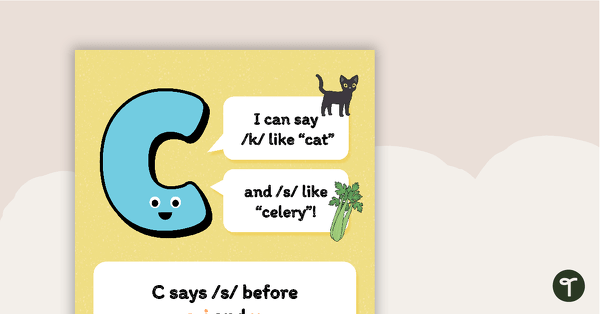
Which Sound? Poster - The Letter C
Remind your students of the different sounds made by the letter C with this colourful classroom poster.
- Plus Plan
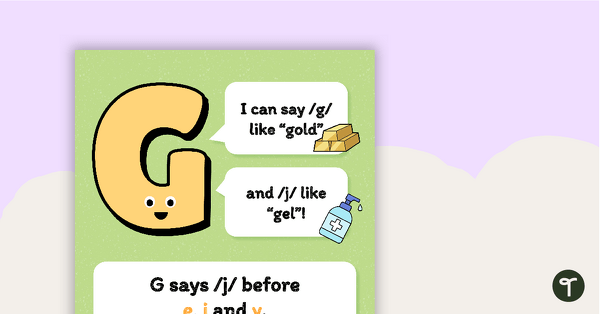
Which Sound? Poster - The Letter G
Remind your students of the different sounds made by the letter G with this colourful classroom poster.
- Plus Plan
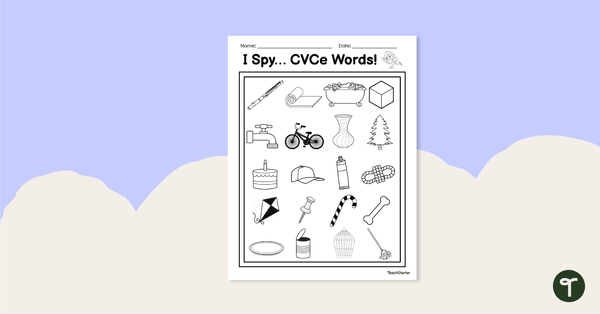
I Spy CVCe Words - Worksheet
Identify words that contain the magic e with this printable black and white worksheet.
- Plus Plan
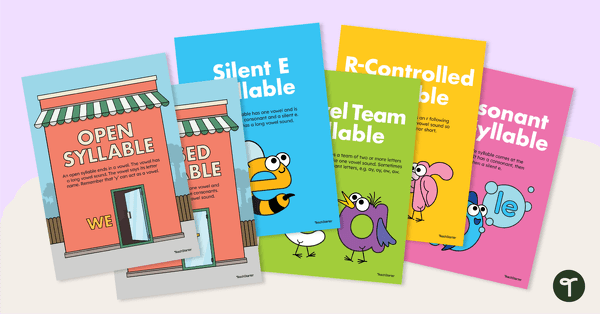
Types of Syllables Posters
Remind your students about the most common syllable types with this set of classroom display posters.
- Plus Plan
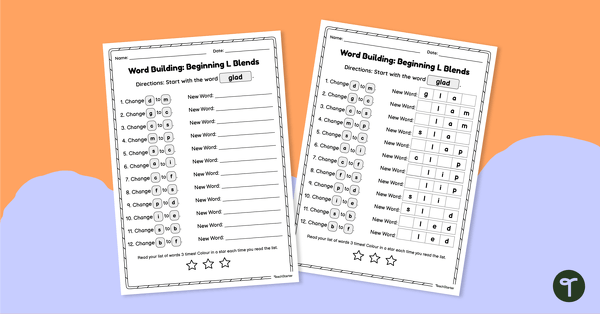
Word Chain Worksheet - Beginning L Blends
Manipulate the individual phonemes in words to create new ones with this differentiated word-building worksheet.
- Plus Plan
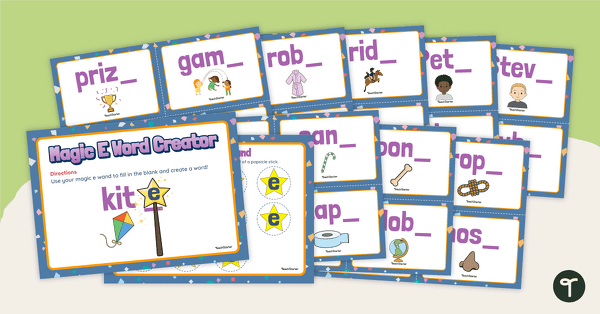
Magic E Wand and Word Cards
Explore the power of the magic e in CVCe words with this crafty phonics activity.
- Plus Plan
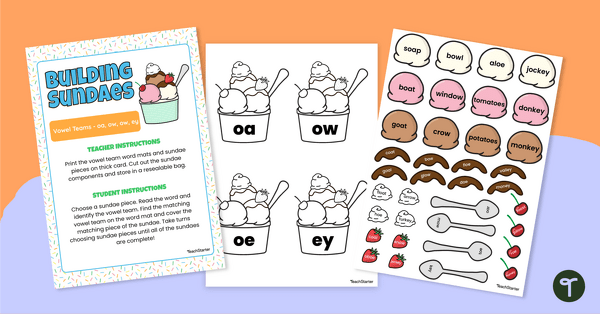
Building Sundaes with Vowel Teams (OA, OW, OE and EY)
Decode words with OA, OW, OE and EY long vowel teams by crafting cute desserts!
- Plus Plan
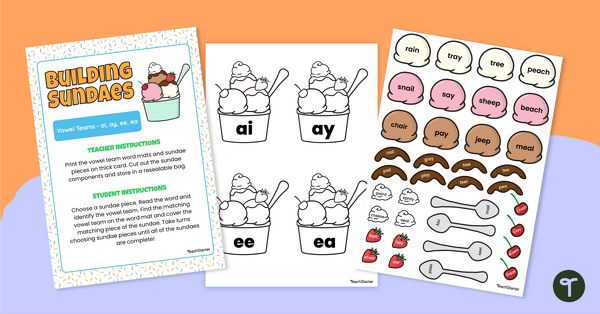
Building Sundaes with Vowel Teams (AI, AY, EE and EA)
Decode words with ay, ai, ea and ee long vowel teams by crafting cute desserts!
- Plus Plan
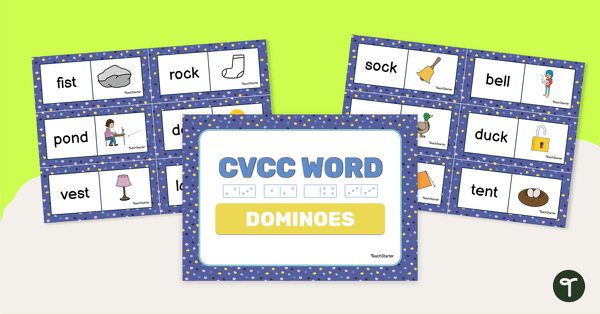
CVCC Word Dominoes
Practise decoding CVCC words with this set of 28 dominoes.
- Plus Plan
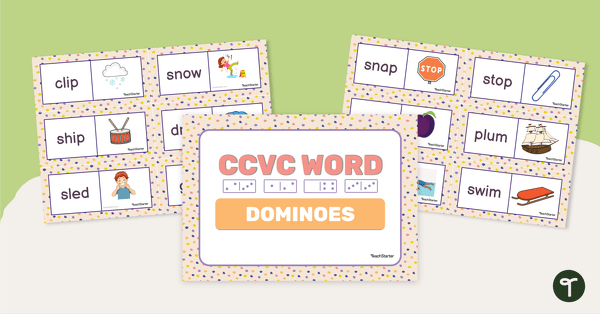
CCVC Word Dominoes
Practise decoding CCVC words with this set of 28 dominoes.
- Plus Plan
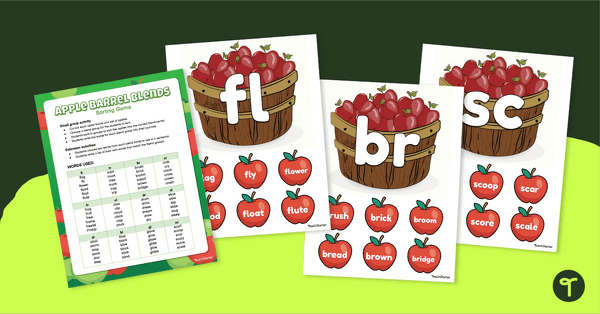
Consonant Blends Sorting Activity - Apple Barrels
Supplement your phonics lessons with a consonant blend sorting activity.
- Plus Plan
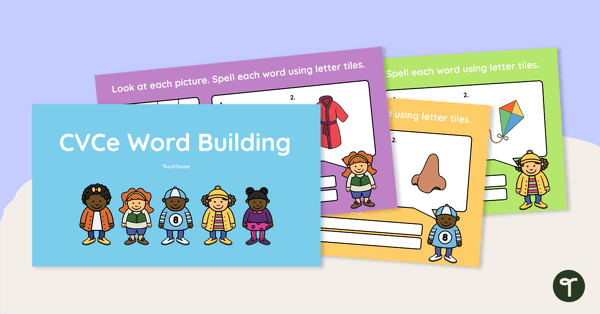
CVCe Word Building - Google Slides Interactive Activity
Practise spelling and reading CVCe words by identifying and blending sounds using this interactive Google Slides activity.